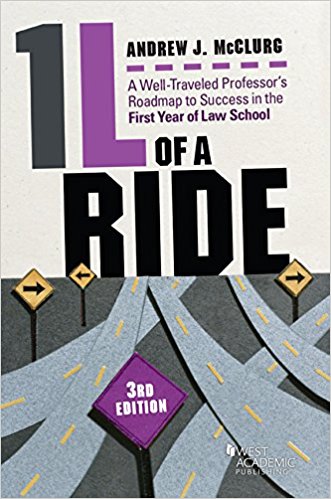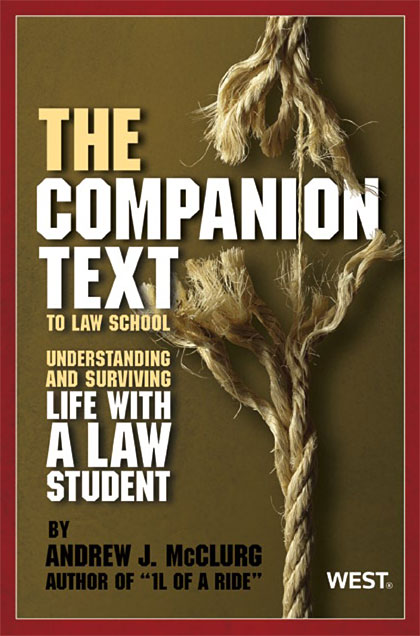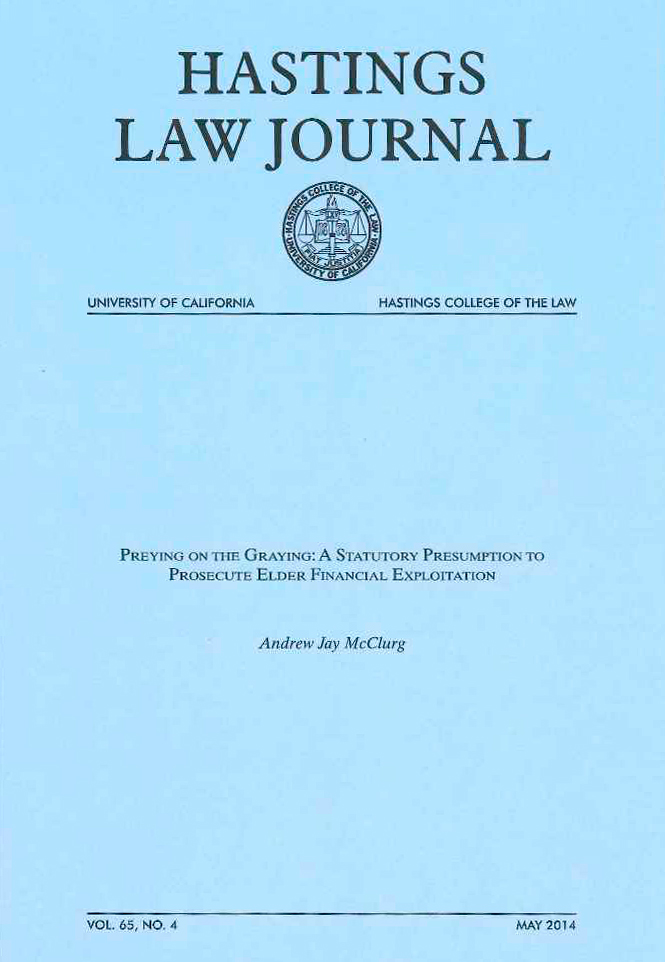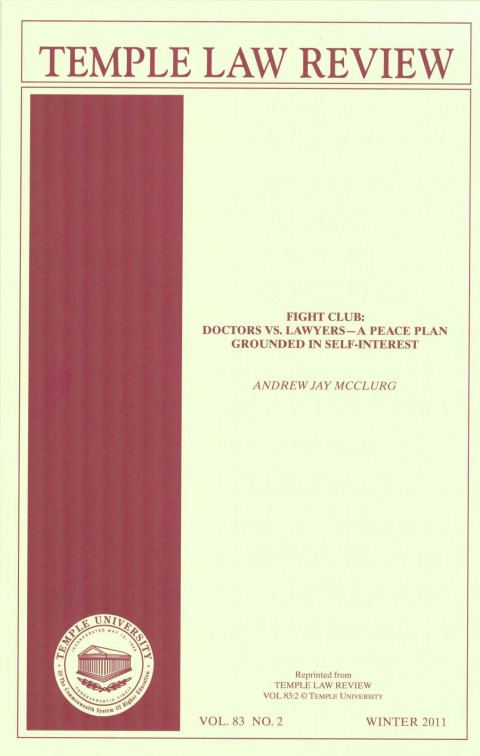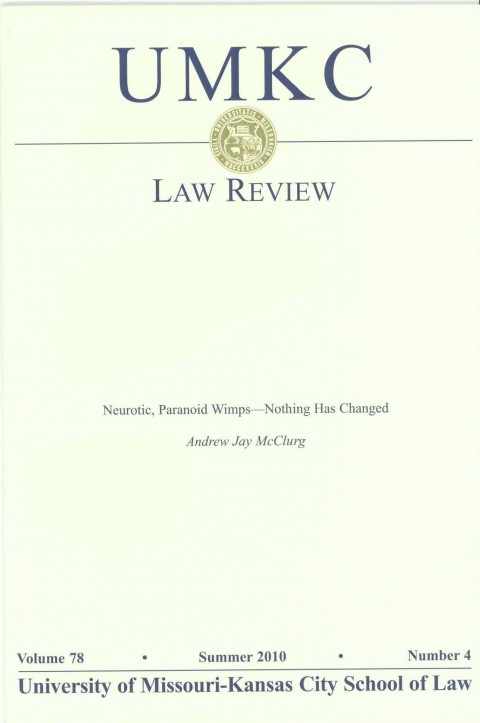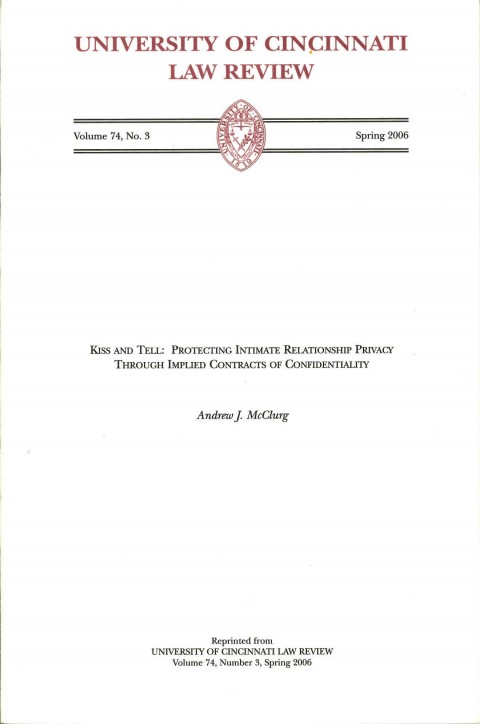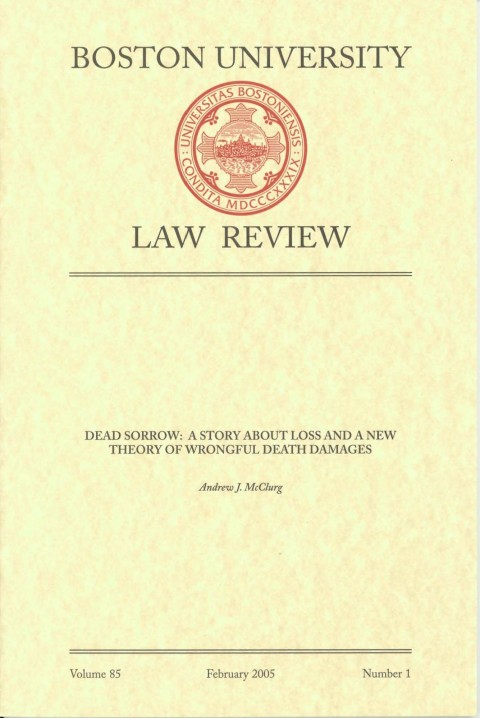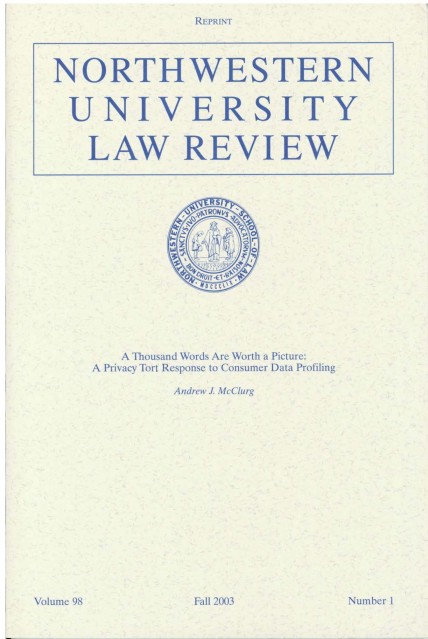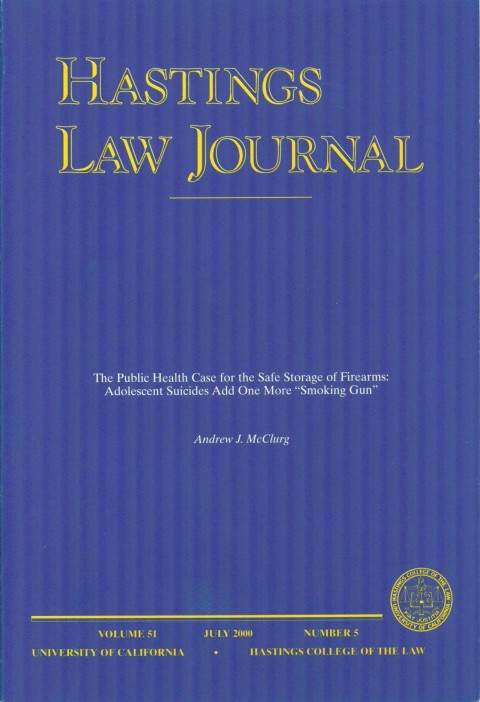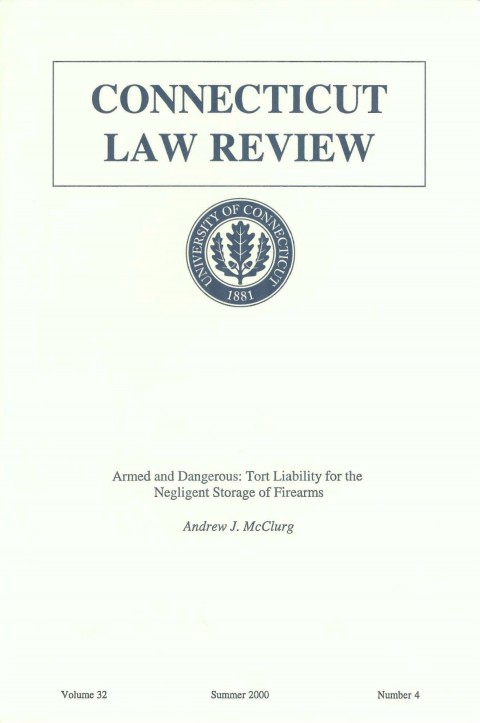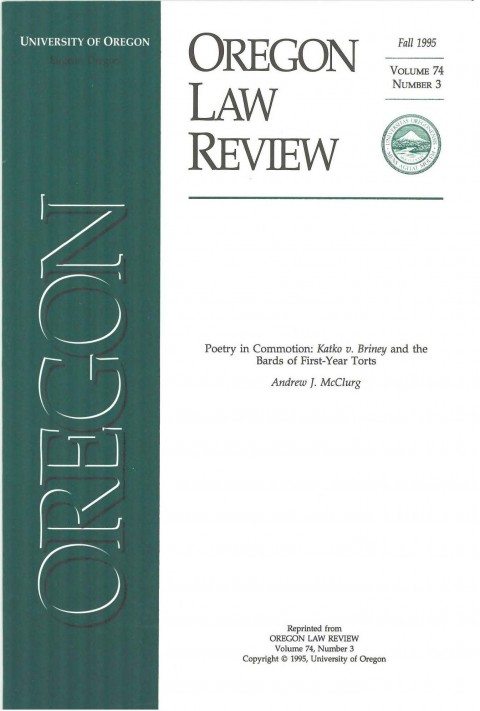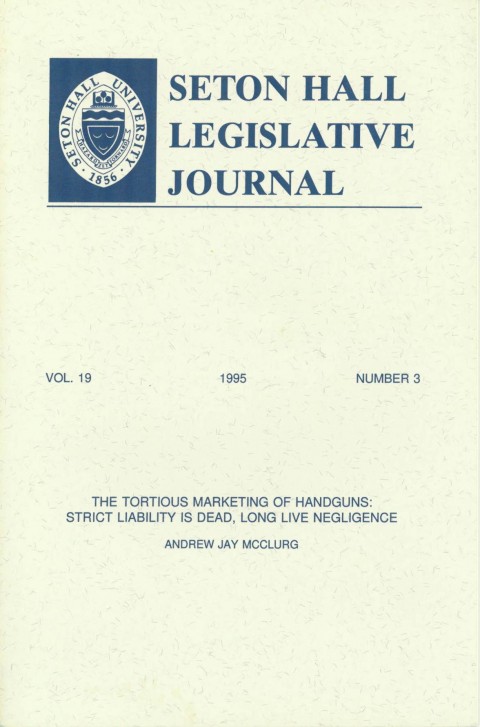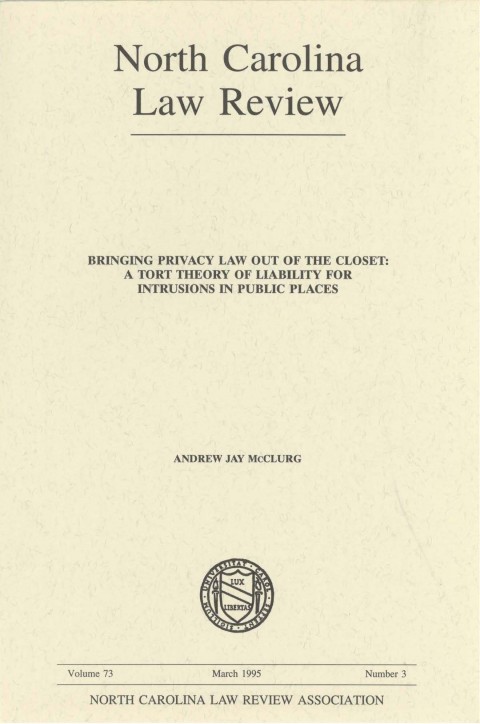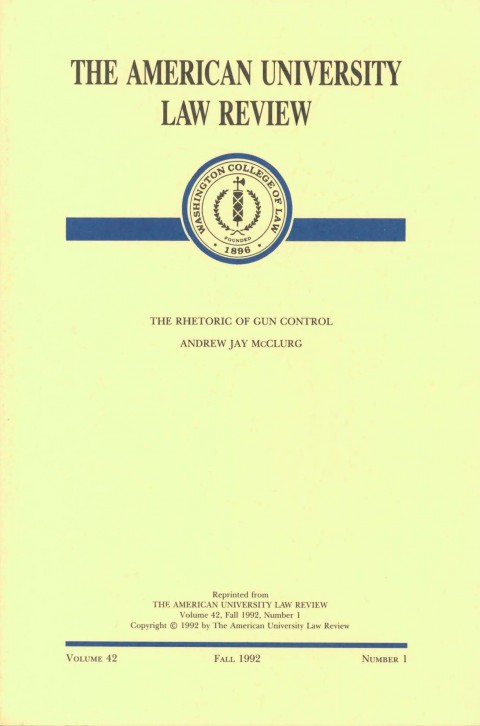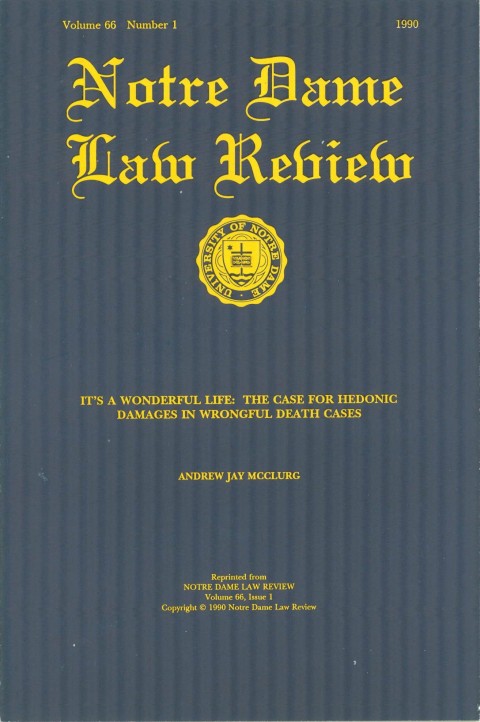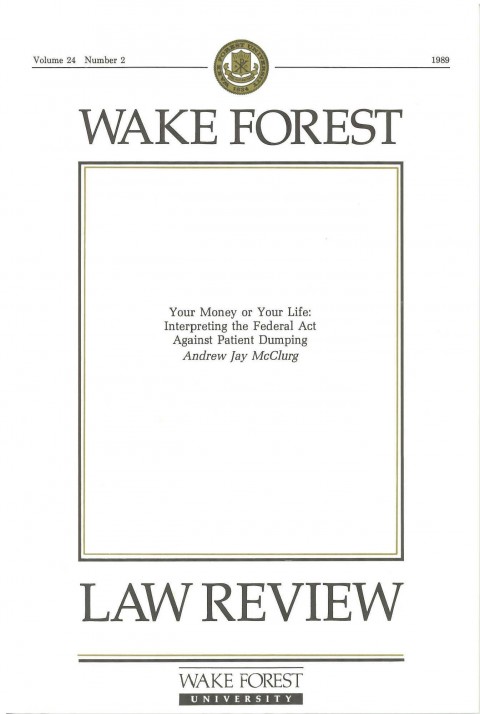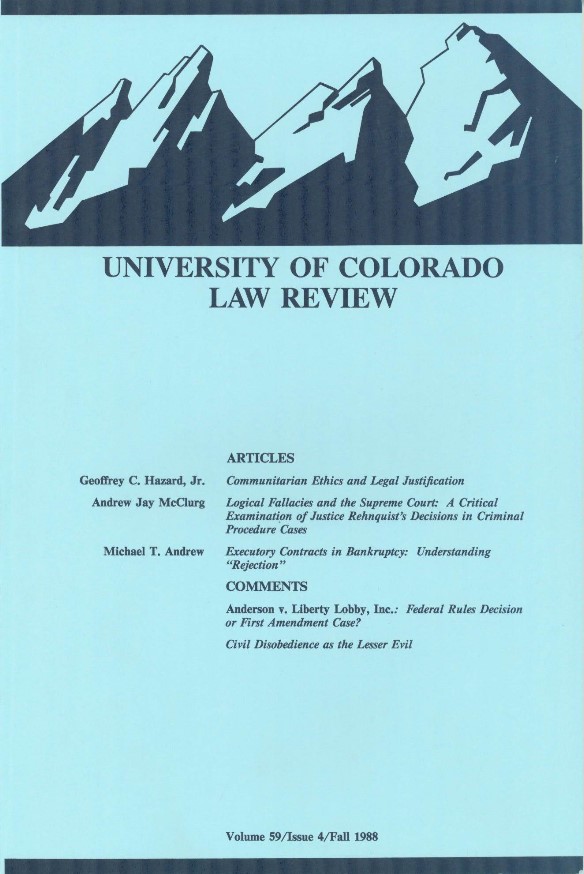November 23rd, 2011  A Texas lawyer is a big fan of the Texas Rangers baseball team. Make that a HUGE fan. So huge that he filed an “emergency motion for continuance” of a pretrial conference in a case that conflicted with Game 1 of the 2010 World Series between the Rangers and the San Francisco Giants. Here’s some of what he said: A Texas lawyer is a big fan of the Texas Rangers baseball team. Make that a HUGE fan. So huge that he filed an “emergency motion for continuance” of a pretrial conference in a case that conflicted with Game 1 of the 2010 World Series between the Rangers and the San Francisco Giants. Here’s some of what he said:
1. The lawyer in charge of this matter for the defendant is Darrell W. Cook (hereinafter referred to as Darrell).
2. Since 1972, when Darrell was but a lad of thirteen, he has been a fan of the Texas Rangers Baseball Club (hereinafter referred to as “Rangers”)
3. As such he has developed a love of the Rangers that has gone generally unrequited for thirty-eight (38) years.
4. Darrell has been to more games than he can possibly recall, has been a season ticket holder in one form or another for over ten (l0) years and has either listened to or watched all or parts of thousands of baseball games played by the Rangers.
5. Everything between Darrell and the Rangers was business as usual this year:
a. Josh Hamilton was discovered drunken and covered in whip cream;
b. Ron Washington was discovered to have ingested a “controlled substance” during the 2009 All-Star break;
c. The top two starters for the Rangers at the beginning of the season, Rich Harden and Scott Feldman, looked like they were completely unfamiliar with the tasks assigned to them and made a mockery of their roles as leaders of the pitching staff; and
d. The team declared bankruptcy and was sold via an auction more befitting a used Buick than a major league baseball team.
6. So, when this setting was received Darrell was convinced he would be in attendance as it was unimaginable that anything the Rangers could do would interfere with such setting.
7. Then suddenly and without warning the Rangers began a steady march toward credibility. …
8. Thereafter the unthinkable occurred ….
The unthinkable, of course, was that the Rangers made it to the World Series. He concluded his motion by noting that “[t]he continuance is not sought merely for delay alone, but so that justice may be done.”
No denying the lawyer’s sincerity. I hope he got to go to the game.
— Emergency Motion for Continuance, City of Irving v. Villas of Irving, Ltd, Case No. T-01398471 01, Municipal Court, City of Irving, Texas, Oct. 25, 2010. Thanks to Thomas Samuel.
November 23rd, 2011 Undocumented reports of weird laws, funny “real life” litigation transcripts, and outrageous lawsuits have been circulating for decades. Some of them are the same stories I read back as a practicing lawyer 30 years ago. People send them to Lawhaha.com all the time, but we never post them because they lack documentation.
Scott Martin’s email below prompted us to think more about the issue and to start a category for Legal Mythbusters. Lawhaha.com would love be the Annenberg Fact-Check center for legal humor, but we don’t have the resources. Actually, we won’t have any resouces. So we’re depending, as always, on you, the loyal Lawhaha.com reader.
If you have any information about whether famous legal tales are “real” or just “tall,” let us know. Meanwhile, here’s Scott’s thoughtful email:
Dear Professor McClurg:
I would very much appreciate your take on two odd phenomena that have long plagued my sensibilities as a lawyer: strange legal transcript excerpts and strange laws.
As you likely know, the “transquips” are humorous sections taken from the transcripts of “real trials.” They vary from Henny Youngmanish one-liners:
Q. Doctor, did you say he was shot in the woods?
A. No, I said he was shot in the lumbar region.
To those with the long setup and stinging punch line:
Q: Doctor, before you performed the autopsy, did you check for a pulse?
A: No.
Q: Did you check for blood pressure?
A: No.
Q: Did you check for breathing?
A: No.
Q: So, then it is possible that the patient was alive when you began the autopsy?
A: No.
Q: How can you be so sure, Doctor?
A: Because his brain was sitting on my desk in a jar.
Q: But could the patient have still been alive nevertheless?
A: Yes, it is possible that he could have been alive and practicing law somewhere.
As to “Strange Laws” here are a few attributed to my home state of Florida:
If an elephant is left tied to a parking meter, the parking fee has to be paid just as it would for a vehicle. It is illegal to sing in a public place while attired in a swimsuit. Men may not be seen publicly in any kind of strapless gown. Having sexual relations with a porcupine is illegal.
You can find these things for all 50 states and countries throughout the globe.
The internet is rife with both of these forms of legal humor, and numerous books have been written on both subjects.
To me, these constitute legal humor—really humor of any kind—but only if they are true. However, I never, ever, ever see any accompanying citation to the cases or statutes from which these tidbits are taken. That really bugs me. While we don’t expect a joke to be traceable back to its creator, the very nature of these two types of humor suggests that they could be easily verified. If it’s from a transcript, there is a written record traceable to a particular case. If it is a law, there should be a citation (aside from common law, which I doubt speaks to securing pachyderms to parking meters).
… [W]hy do these claims persist? Is it the same explanation as for “urban legends”— i.e., the more ridiculous the claim, the more likely it is to be believed?
Sincerely,
Scott Martin
I agree. If these come from official transcripts and laws, let’s see some proof.
— Thanks to Scott Martin for helping to keep legal humor honest.
November 23rd, 2011  Why wait until after? So you’re reading through the patent entries on the U.S. Patent & Trademark Office website, you know, just for fun, and come across a patent for an invention titled “Method of using a water pipe”:
Bor-ring. But wait. Not so fast. Turns out this inauspiciously titled invention is actually quite interesting:
A water pipe providing sexual stimulation includes a tube with an exit port at its upper end, an reservoir port at its lower end, and an inlet port. The inlet port is spaced from the lower end whereby the inlet port remains exposed when the lower end is inserted into a vagina. The lower end cooperates with the wall of the vagina to form a water reservoir holding water in the lower end and the vagina. A stem is received into the inlet port with an end opening submerged in the water reservoir. Suction applied at the exit port draws air through the stem to bubble through the water reservoir to generate stimulatory vibrations transmitted to the vagina. Optionally, a bowl holding combustible material communicates with the stem such that smoke bubbles through the water reservoir to simultaneously filter and cool the smoke and generate stimulatory vibrations.
“Water pipe”? “Suction”? “Inlet port”? “Combustible material”? “Smoke”? All combined with a sensitive body part?
Is it just because I’m a Torts professor or does this sound like it fails Judge Hand’s risk-utility formula?
— U.S. Patent No. 7,122,000, issued Oct. 17, 2006. Thanks to David Barman.
November 22nd, 2011 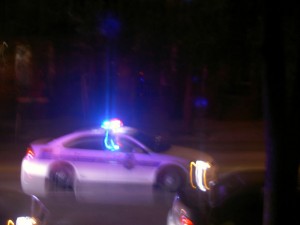 These games are more fun - and much safer - to play at home. Melanie Ware must have been in a partying mood when she did the patent research below. She’ll tell you about it:
What party would be complete without board games? Each of the priceless treasures below is a patented board game, though I’m not so sure that Milton Bradley is beating down many of the patent holders’ doors to put these things on the market. Let’s get this party started!
1. Here’s a “Board game and method for teaching responsible drinking.” U.S. Patent 6,276,686, August 21, 2001, provides in part: “Another objective is to provide a board game that teaches responsible drinking to a plurality of players.” (That’s it, share the love. Nobody wants to drink alone.) “A further objective is to provide a board game that is easy to learn and fun to play.”
2. When the “responsible drinking” goes too far, here’s a “Board game simulating drunk driving.” U.S. Patent 4,216,966, August 12, 1980. The title speaks for itself, but here is a basic overview: “The invention relates to a game board apparatus which correlates consumption of liquor and the time span during which the liquor is consumed. The game board includes a pathway of connected playing locations upon which a player token is progressed …. Adjacent some of the playing locations are stop locations where liquor and time can be obtained. With the roll of dice, the player moves toward a happening such as the theater and enroute can be moved into a liquor establishment wherein liquor is consumed over a stated period of time all evidenced on a card drawn by the player. The amount of liquor consumed and the time of consumption in the various liquor establishments are recorded on a display board. Information from the display board is transferred to a blood alcohol chart which indicates sobriety or drunkenness. If a player is shown to be drunk, the sober player token head is changed to a token head indicating drunkenness and a police car is put into play by use of a second pair of dice.”
3. Since you’ve been driving drunk, it’s only natural that you might get busted, in which case you’ll need the “Double-Standard DWI-Rules Game.” U.S. Patent 6,412,77, July 2, 2002, describes “A game for a multitude of players based on driving rules applied according to a player’s social status.” (Apparently, the game educates us on who’s most likely to get out of a DWI.) “The object of the game disclosed herein, is to provide amusement for the players while they acquaint themselves with the financial liability incurred by being arrested for driving drunk. It is also is an object of the game is to provide amusement for the players while they acquaint themselves with the behind the scene manipulations resulting in special treatment for drunk-driving offenders according to their social status.”
4. Finally, you can wend your way through the criminal justice system playing a “Board game apparatus involving criminal justice,” U.S. Patent 3,977,680, August 31, 1976. “This invention relates to an educational game which simulates the criminal justice procedure, from the initial police encounter, through Attorney selection, arraignment, the posting of bond and the selection of an appropriate jury.”
Thanks to Melanie Ware. The full text of these patents can be found by plugging in their numbers at the U.S. Trademark and Patent Office website here.
November 18th, 2011 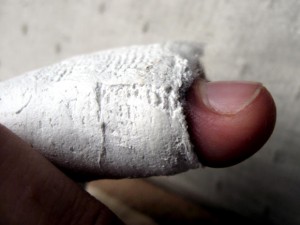 Family friendly depiction of the injury. Doe v. Moe, a May 2005 Massachusetts appellate case, gives a whole new meaning to the idea of safe sex. A guy sued his long-time girlfriend (ex-girlfriend?) for negligence when an ill-advised change in position during consensual intercourse resulted in him suffering a fractured penis. (The opinion gives details about how the accident occurred.)
In a case of first impression, the court struggled to arrive at an appropriate and workable standard of care to apply to private consensual sexual conduct. The court noted:
There are no comprehensive legal rules to regulate consensual sexual behavior, and there are not commonly accepted customs or values that determine parameters for the intensely private and widely diverse forms of such behavior.
Accordingly, the court concluded that the general negligence standard of reasonable care under the circumstances was inappropriate for consensual sex-physical injury cases.
Instead, the court said the plaintiff needed to show conduct rising to the level of “wanton or reckless.” The court opined that while the trial record might support a finding that the defendant’s conduct exposed plaintiff to a risk of harm, it did not support a finding of wanton or reckless conduct.
The case does raise an interesting legal issue. With so many different preferences and positions and idiosyncratic fantasies and fetishes, is there such a thing as a standard of “ordinary and reasonable care” for sex?
— Doe v. Moe, 827 N.E.2d 240, 245 (Mass. Ct. App. 2005). Thanks to David Keller and Professor Howard Wasserman.
November 15th, 2011 Ever think being a “taste-tester” might be a good way to pick up a few extra bucks? Better read the fine print before signing up.
U.S. Patent No. 6,485,773 is a patent for an invention for a “semen taste-enhancement dietary supplement.”
This invention allegedly results in a “significant improvement to the taste of the male ejaculate by reducing its generally salty and/or bitter taste while also adding a pleasant flavor that is considered by 98.5% of all customers as very enjoyable.”
Marketing testing started with 27 couples of various lifestyles, all of who reported “significant semen-taste improvement.”
The secret ingredients include freeze-dried pineapple juice, broccoli powder, celery powder, strawberry powder and banana powder.
They’re not called Legal Oddities for nothing.
— U.S. Patent No. 6,485,773, Nov. 26, 2002. Thanks to David Barman.
November 1st, 2011  Professor Jonathan Turley exposed phony outlandish tort cases. Although several years old, Professor Jonathan Turley’s USA Today article exposing phony tort cases remains must-reading for anyone concerned about the tort reform movement. Why? Because people are still circulating these tall tales.
You know those crazy tort lawsuits you read about, the ones that make people indignant about the tort sytem, the ones politicians and tort reformers use to build public support for the movement, the ones that get endlessly forwarded to email inboxes?
They’re crazy, to be sure. But, one problem. A lot of the most notorious cases are fabricated, as Turley explored in his article.
The notorious–but apparently fictitious winning-plaintiffs–and their outlandish “cases” include:
• Kathleen Robertson, a woman who–imagine this–received a $780,000 jury award against a furniture store after she tripped over her own son.
• Carl Truman, who won a $74,000 judgment after his hand was run over by a neighbor. The neighbor could not see Truman because he was kneeling down while in the process of stealing the neighbor’s hubcaps.
• Terrence Dickson of Bristol, Pa., a man who received a $500,000 award against a garage-door manufacturer after he almost starved while trapped in the garage of a house he was burglarizing while the family was on vacation.
• And my personal favorite, a Mr. Grazinski, who won more than $1,750,000 against Winnebago when the RV he was driving went off the road after he put it on cruise control at 70 mph to go into the back to fix a cup of coffee.
Turley was unable to track down records showing that any of these, or several other notorious crazy lawsuits, actually existed.
It should be more than a little troubling to people that state legislatures have passed thousands of tort reform statutes throwing out 200 years of carefully considered common law (judge-made law) in part based on sound-bite reporting of cases that never happened.
— Jonathan Turley, Legal Myths: Hardly the Whole Truth, USA Today, Jan. 30, 2005.
October 17th, 2011  This peek inside a real juror’s mind is hilarious. Below is a transcription of a handwritten letter from a juror to the judge during a civil trial (verified by seeing a scan of the handwritten letter). I deleted the juror’s name, left in typos, and inserted paragraph-spacing for reading convenience. This peek inside a real juror’s mind is hilarious. Below is a transcription of a handwritten letter from a juror to the judge during a civil trial (verified by seeing a scan of the handwritten letter). I deleted the juror’s name, left in typos, and inserted paragraph-spacing for reading convenience.
Your Honor
I am tired of spending day after day wasting my time listening to this bullcrap. This is cruel and unusual punishment. The plantif is an idiot. He has no case. Why are we here? I think my cat could better answer these questions . . . and he wouldn’t keep asking to see a document.
I’ve been patient. I’ve sat in these chairs for 7 days now. If I believed for a second this was going to end on Thursday I might not go crazy. This is going to last for another 4 weeks. I cannot take this. I hate these lawyers and prayed one would die so the case would end.
I shouldn’t be on this jury. I want to die. I want to die!! Well not die for real but that is how I feel sitting here. I am the judge, you’ve said that over and over, well I am not fair and balanced. I hate the plantif. His ignorance is driving me crazy. I know I’m writing this in vain but I have to do something . . . for my sanity. These jury chairs should come with a straight jacket.
An entire day today and we are still on the same witness. The defense hasn’t even started yet and we have 3 days left 3 days my ass. Not that the defense needs a turn considering the plantif and his lawyer (who looks like the Penquin) have no case!!!! Thanks for letting me get this off my chest. Please keep the disordelies nearby. I may need them.
Juror #5
— Thanks to Tom Slater
October 17th, 2011  Don't mistake Congressman Joe Walsh for Rock Star Joe Walsh, although life's been good to both of them so far. A Los Angeles lawyer representing rocker Joe Walsh (James Gang, Eagles) sent a snide cease and desist letter to an Illinois Congressman of the same name for allegedly using the melody from Walsh’s classic song “Walk Away” to promote his campaign, retitled and with new lyrics. Here are some excerpts:
Dear Mr. Walsh:
We represent Joe Walsh—not you, but the musician who plays guitar with the Eagles. Joe wrote a song called “Walk Away.” A lot of people know this song. That’s why when they heard your campaign song, “Lead The Way,” they noticed it was the same song as “Walk Away,” but with peculiar lyrics.
As a candidate for Congress, you probably have a passing familiarity with many of the laws of this great country of ours. It’s possible, though, that laws governing intellectual property are a little too arcane and insufficiently populist for you to really have spent much time on. …
First, there’s the United States Copyright Act. It says a lot of things, but one of the things it says is that you can’t use someone else’s song for your political campaign promotions unless you get permission from the owner ….
Second, … you’re not allowed to take someone’s song and change the lyrics. … Now, I know why you used Joe’s music—it’s undoubtedly because it’s a lot better than any music you or your staff could have written. But that’s the point. Since Joe writes better songs than you do, the Copyright Act rewards him by letting him decide who gets to use the songs he writes.
You might also want to check out the trademark laws. They’re there to protect the public from being confused as to the source of goods or services or as to whether someone endorses particular goods or services. Given that your name is Joe Walsh, I’d think you’d want to be extra careful about using Joe’s music in case the public might think that Joe is endorsing your campaign or, God forbid, is you. …
I’m sure that when you take this letter to a lawyer with a passing knowledge of copyright and trademark law, he’ll give you some good lawyer words to put in a letter back to us – things like “First Amendment,” “fair use,” “parody” and “so’s your old man.” Having dealt with situations like this in past, we know that the first refuge of political scoundrels is the First Amendment. …
As a former Presidential candidate, Joe Walsh knows how tough it is to get elected. But he always played by the rules. And so should you. Therefore, we must insist that you discontinue using in your campaign any material that infringes the copyright in “Walk Away” (or any of Joe’s other songs).
We trust that you will promptly comply with this request so that we don’t have to go all Jackson Browne on you [referring to Jackson Browne suing John McCain for using his song “Running on Empty” during the 2008 campaign without permission]. …
Congressman Walsh responded in a letter asserting the song was performed as a parody, not for campaign promotion, and is protected under the fair use doctrine of U.S. copyright law.
— Letter from Peter T. Paterno to U.S. Rep. Joe Walsh (Ill.), 1/26/2010. Thanks to Professors Janet Richards and Jodi Wilson.
October 17th, 2011 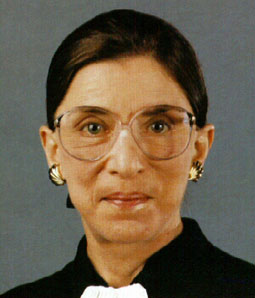 Justice Ruth Baeder Ginsburg – Not that funny according to study. Boston University Law Professor Jay D. Wexler conducted a study of the relative funniness of U.S. Supreme Court Justices. His results were published in The Green Bag and reported in the New York Times.
Wexler’s methodology was to count and tabulate the insertions of “[Laughter]” in transcripts of oral arguments during the 2004 term, when argument transcripts began including the Justices’ names. The results include the conclusion that Justice Antonin Scalia is the Chief Comedian on the High Court, nineteen times funnier than Justice Ruth Bader Ginsburg. Scalia, the study showed, is good for at least one laugh per oral argument. On the other hand, Justice Clarence Thomas, who rarely speaks during oral arguments, received no laughs.
As the New York Times article pointed out, the baseline for laughter in the solemn Supreme Court is fairly low. It’s not likely the same comments would generate guffaws on Comedy Central.
Here are some Supreme Court rib-ticklers quoted in the New York Times article:
[After a lightbulb exploded in the courtroom:]”It’s a trick they play on new chief justices all the time,” Chief Justice John G. Roberts Jr., who joined the court that month, said of the explosion.
“[Laughter.]”
“Happy Halloween,” Justice Scalia retorted.
“[Laughter.]”
And then, the kicker. “We’re even more in the dark now than before,” Chief Justice Roberts said.
“[Laughter.]”
On the other hand, in a January argument in a statute-of-limitations case, Justice Anthony M. Kennedy made an amusing observation about the absurdity of modern life.
“Recently I lost my luggage,” Justice Kennedy said. “I had to go to the lost and found at the airline, and the lady said has my plane landed yet.”
“[Laughter.]”
That’s gold. Let’s see a sitcom based on the madcap lives of U.S. Supreme Court Justices.
— Adam Liptak, So, Guy Walks Up to the Bar, and Scalia Says …, N.Y. Times, Dec. 31, 2005.
October 16th, 2011  Lawyers at work? A Montana criminal defense lawyer filed a motion for the court to order a fist fight between the defense team and the prosecutors in a case in which the lawyer’s client allegedly killed someone who was bullying him or his friend or both.
The motion is not exactly a model of clarity, but the lawyer apparently was trying to make the point that, in prosecuting his client for killing in apparent self-defense while being attacked with fists, the state was condoning fist fights. Here’s how the motion starts out:
COMES NOW counsel for Defendant, through his [sic] and respectfully requests this Court to Order a fist fight between Shaun Donovan and John Connor on one sided [sic] and Kirk Krutilla and Bill Buzzell on the other side.”
The lawyer then argues that the prosecutors had taken the position that it was “perfectly right, legal and moral” for the deceased to have attacked the defendant and states that the defense team would love to give Donovan and Conner a chance to stand up for the principle they stand for; i.e. the brutal humiliation and beating up of weaker human beings is the most cherished principle in life. Therefore, the defense moves that before the hearing April 17, 2006 that the state be given a chance on what they cherish in a resolution of dispute and that there be a fist fight [between the prosecutors and the defense lawyers].
Not surprisingly, the prosecutors took issue with the defense’s characterization of the state’s position in the State of Montana’s Response to ‘Motion for Fist Fight,’ and requested “that the Court deny the same.”
The prosecutors insisted they were not standing up for a legal and moral right to beat up people. Instead, “the State has asserted from the outset that the infliction of thirteen lethal stab wounds on an unarmed aggressor by [the defendant and his friend]” was an excessive use of force in self defense.
The prosecutors argued the defendant’s motion was “ill conceived” and that humor should not extend to filed court pleadings in a case which has lead to the death of one young man, serious and possibly permanent injury to others and the specter of long imprisonment and community strife for others.
After condemning the defense lawyer’s motion, the prosecutors puffed up and essentially insisted they could kick the defense lawyers’ butts if the proposed fight were to ensue, or as they put it in a more lawyerly fashion, they were “confident they could acquit themselves respectably if it were necessary to settle any part of this matter by means of a physical contest.”
— Motion for Fist Fight, Montana v. Mauher, Case No. D2005-8, Mont. 4th Judicial Dist. Ct., Mineral County, filed Mar. 27, 2006. Thanks to Donna Mustard.
October 16th, 2011 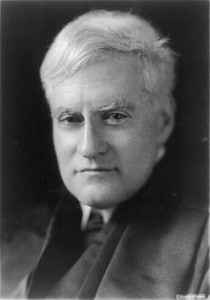 Cardozo wrote the famous majority opinion in Palsgraf. Several lawhaha visitors sent in Mark Fass’s article in the New York Law Journal about an alleged curse on the family of Helen Palsgraf, the most famous torts plaintiff in history. Every lawyer remembers Mrs. P from law school. To test this theory, visit an elderly, dying lawyer in a coma and shout “Palsgraf!” Immediately, he will recite: “A man carrying a box wrapped in newspaper boarded a train at the Long Island Railroad Station … cough, cough … ack.”
The box contained fireworks. When it was dislodged by employees of the Long Island Railroad trying to help the man on the train, the fireworks exploded, allegedly knocking a scale onto Mrs. P. Mrs. P’s saga led to the legendary, and incredibly confusing, opinions by Judge Benjamin Cardozo (that’s Cardozo in the picture–handsome fellow he was) and Judge William Andrews studied by students year in and year out at law schools great and small.
Now Fass reports that Mrs. P’s accident began a curse on the Palsgraf family, at least that’s what some of her descendants believe. One descendant fell off a ladder in 1965 and sued the manufacturer, but never made it to trial because the ladder was stolen. Another lost her thumb when a ping-pong table collapsed. A lawsuit led to a small settlement. Another descendent tripped while jogging over a broken curb, but was discouraged by lawyers from filing suit.
The most intriguing Palsfraf mishap reported by Fass involves a descendant who lost control of his truck on an icy hill in 1968. The truck slid towards the edge of cliff. Guess what saved the life of Mrs. P’s closest living relative? The truck’s wheels got caught on a track of … you guessed it, the Long Island Railroad. (Cue Twilight Zone theme.)
— Mark Fass, Palsgraf Railroad Injury Proximate Cause of Family Curse?, New York Law Journal, Dec. 10, 2004.
October 16th, 2011 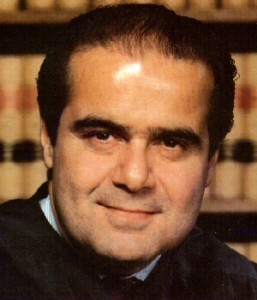 As a Torts prof, I loved this tidbit sent in by Elise Hendrick. Good old Mrs. Palsgraf. You can try, but you can’t keep her down. As a Torts prof, I loved this tidbit sent in by Elise Hendrick. Good old Mrs. Palsgraf. You can try, but you can’t keep her down.
Elise was listening to oral arguments before the U.S. Supreme Court in Exxon Co. USA v. Sofec, 116 S.Ct. 1813 (1996), and came across the following exchange between George Playdon, counsel for Sofec, and Justice Scalia. The two were engaged in a colloquy about the maritime supervening cause doctrine:
Scalia: I’m not sure that you need a “doctrine of supervening cause.” Is a doctrine of supervening cause anything other than Palsgraf? When you say, you know, that the negligence … the causality … had long since terminated. Once you say you’re out of the scope of the risk, what do you need a doctrine of supervening cause for? And isn’t that basically your case?
Playdon (chuckling): I smile—I never envisioned thirty years ago that I’d have the opportunity …
Scalia: Of arguing Palsgraf!
Playdon (stammering, laughing): Obviously, Palsgraf is a foreseeability doctrine, just like Hadley v. Baxendale is a foreseeability problem.
Elise speculates that this may have been the first time the implausible case of Mrs. P has been mentioned in court since Palsgraf was decided in 1928.
— Thanks to Elise Hendrick.
October 16th, 2011  U.S. Patent No. 4,320,756 appears to be a useful and quite ingenius invention that could prevent deaths from smoke inhalation in the event of fire by allowing trapped occupants in proximity to a toilet an alternative source of air. U.S. Patent No. 4,320,756 appears to be a useful and quite ingenius invention that could prevent deaths from smoke inhalation in the event of fire by allowing trapped occupants in proximity to a toilet an alternative source of air.
The illustration shows a man with a tube in his mouth. The tube runs into a toilet and back into the toilet sewage pipe, where breathable air apparently exists. But the inventor oversells the invention a bit by naming it the “Fresh-Air Breathing Device and Method,” and repeatedly extolling the “fresh air” one can access while waiting for help from firefighters.
Fresh air? Not too sure about that. The breathing tube connects to “a sewer line or soil pipe for draining waste materials and water upon flushing of the toilet.” It does contain a filter to help deal with the “residual sewer gases.” I guess that would help.
By the way, an excellent part of the invention claimed is “the step of flushing said toilet” prior to inserting the breathing tube. Leave it to those inventors. They think of everything.
— U.S. Patent No. 4,320,756, Mar. 23, 1982. Thanks to David Barman.
October 16th, 2011  From University of Illinois law librarian Paul D. Callister came news of an Illinois law, House Bill 3086, that would amend the Illinois Criminal Code to ban the “splitting of tongues” except by licensed physicians or dentists and then “only if there is a therapeutic or clinical procedure for performing the procedure.” From University of Illinois law librarian Paul D. Callister came news of an Illinois law, House Bill 3086, that would amend the Illinois Criminal Code to ban the “splitting of tongues” except by licensed physicians or dentists and then “only if there is a therapeutic or clinical procedure for performing the procedure.”
What is “tongue-splitting”? Pretty much what it sounds and looks like. According to the statutory definition, it “means the cutting of a human tongue into 2 or more parts.” Why this procedure is so popular that legal sanctions are required to prevent its apparently rampant medically unnecessary use is mysterious. Seems understandable the legislature wouldn’t want people cutting other people’s tongues into parts unless there was a “therapeutic or clinical” need for it. On the other hand, citizens arguably have a constitutional liberty interest in splitting their tongues just for the heck of it (assuming they’re competent and sober when the procedure is performed).
Paul wryly observed that “[a]pparently, politicians may still speak with forked-tongues, but it is illegal to facilitate the practice among the general population without proper licensing and establishing medical necessity.”
— Illinois House Bill 3086.
October 16th, 2011  Good old American ingenuity and entrepreneurship. Just when you think everything worth inventing has already been invented, someone comes up with a great invention like the one described in U.S. Patent No. 5,928,170: the “audio-enhanced sexual vibrator.” Good old American ingenuity and entrepreneurship. Just when you think everything worth inventing has already been invented, someone comes up with a great invention like the one described in U.S. Patent No. 5,928,170: the “audio-enhanced sexual vibrator.”
The ultimate gift for multi-taskers, this is a vibrator with a built-in “audio signal processor for recording and playing back personalized messages, before or after sexual interplay for enhanced aural stimulation.”
The main object of the invention is “to enhance the pleasure or satisfaction of a person during sexual intercourse, sexual simulation, or orgasmic therapy by providing a vibrating device which can record intimate or personalized messages, music or other sound effects ….”
However, “a further object of the invention is to provide a vibrator that can capture spontaneous thoughts or ideas occurring during a sexual situation, whereby those thoughts or ideas may otherwise be lost or forgotten if not recorded during the emotional or passionate state of sexual arousal.”
Suppose, for example, in the middle of sex, the user remembers they forgot to pick up the dry cleaning. Just make a quick memo to self and no worries.
If they could only build a smart phone into it, they’d really have something going.
— U.S. Patent No. 5,928,170
October 16th, 2011  You’d think the bathroom would be the one place you could escape to for some quiet time, but no. You’d think the bathroom would be the one place you could escape to for some quiet time, but no.
U.S. Patent No. 6,417,773, issued July 9, 2002, is for a talking toilet. This invention allows one to record audio messages that are delivered to toilet users when a microphone hears the sound of the toilet flushing. The purpose of the invention is to promote good hygiene by reminding toilet users to wash their hands, but since users can record any message they want, there’s no reason the device couldn’t be put to other good uses like practical jokes or even political commentary. “There goes the economy” with every flush could have your guests in stitches.
For more toilet humor, check out U.S. Patent No. 5,829,068, issued Nov. 3, 1998, which could prove to be the greatest invention ever for promoting peace in the war between the sexes. The invention is a hydraulic toilet seat raising and lowering device. No more, “Honey, you didn’t put the seat down.” Let this baby do it for you.
— Thanks to David Barman, the Patent Man.
October 16th, 2011  Okay, maybe it’s a little fancier than a stick, but it’s still pretty funny that someone could get a patent for “[a]n apparatus for use as a toy by an animal, for example a dog, to either fetch, carry or chew; includes a main section with at least one protrusion extending therefrom that resembles a branch in appearance.” U.S. Patent No. 6,360,693. Okay, maybe it’s a little fancier than a stick, but it’s still pretty funny that someone could get a patent for “[a]n apparatus for use as a toy by an animal, for example a dog, to either fetch, carry or chew; includes a main section with at least one protrusion extending therefrom that resembles a branch in appearance.” U.S. Patent No. 6,360,693.
Included in the invention are the “OBJECTS AND SUMMARY OF THE INVENTION,” such as: “It is an object of the present invention to provide an animal toy that a dog may carry in its mouth.” Wow, that is like, almost Edison-esque.
And this one: “It is also an important object of the invention to provide an animal toy that is easy for a dog to pick up off of the ground.” Well, of course, that’s important. Dogs have a rough enough life as it is without having to suffer the annoyance of fetching a toy that’s hard to pick up off the ground. Think how aggravating that must be.
This must-have toy for your canine friends also floats, glows in the dark and is flavored. You can see how wistful the doggie in the picture looks, stuck with that large tree limb instead of a coveted patented stick.
— U..S. Patent No. 6,360,693, issued Mar. 26, 2002. Thanks to David Barman.
October 16th, 2011  Not a "boobie pillow" (Lawhaha.com is family friendly.) Patrick Strader reports that he came upon this California ordinance banning “boobie pillows” accidentally, while searching under “B” in the code index for something more mundane–“Bills of Lading” or perhaps “Boards or Commissions.” Of course, he had to stop and look it up.
9.12.010 Public sales of articles depicting female breasts.
A. Finding of Fact Leading to Enactment.
Residents of the county have petitioned the board of supervisors of the county to prevent persons who display, sell or offer to sell upholstered or stuffed articles depicting, simulating or caricaturing female breasts from vending such articles at sites adjacent to and near county highways. …
The petitioners have represented, and the board of supervisors finds, that (unlike indecent and vulgar displays in movies, newspapers, television and other places, the offensiveness of which can be prevented or controlled by turning off the set, canceling a subscription, declining to purchase, or nonattendance) the hawking of those articles named by its vendor and sold as “boobies pillows” along the public highways is a species of indecency and vulgarity which cannot be ignored or controlled by passersby, which assails the eyes and minds of all who are required to use county highways, and which should be barred and controlled for the peace, safety and welfare of the unincorporated areas of the county.
B. Display and Sale Banned Within One Thousand (1,000) Feet of Highways.
No vendor shall vend stuffed articles depicting the female breasts (sold as “boobie pillows”) within one thousand (1,000) feet of any county highway.
C. Regulation of Display More Than One Thousand (1,000) Feet from Highways.
No vendor shall vend stuffed articles depicting the female breasts (sold as “boobie pillows”) anywhere in the unincorporated area of the county unless: [elaborate conditions are enumerated]
Violations are a misdemeanor punishable by a fine of not more than five hundred dollar ($500.00) or imprisonment in the county jail for not more than ninety (90) days, or both. Each day of violation constitutes a separate offense. Residents can now sleep easily.
October 16th, 2011  Check out this “cease and desist” letter sent by the Michigan Department of Environmental Quality regarding the unauthorized construction of two dams on some property, and the amusing reply (some paragraph breaks for reading ease). Check out this “cease and desist” letter sent by the Michigan Department of Environmental Quality regarding the unauthorized construction of two dams on some property, and the amusing reply (some paragraph breaks for reading ease).
CERTIFIED
December 17, 1997
Dear Mr. DeVries:
SUBJECT: DEQ File No. 97-59-0023-1 T11N, R10W, Sec. 20, Montcalm County
It has come to the attention of the Department of Environmental Quality that there has been recent unauthorized activity on the above referenced parcel of property. You have been certified as the legal landowner and/or contractor who did the following unauthorized activity:
Construction and maintenance of two wood debris dams across the outlet stream of Spring Pond. A permit must be issued prior to the start of this type of activity. A review of the Department’s files show that no permits have been issued.
Therefore, the Department has determined that this activity is in violation of Part 301, Inland Lakes and Streams, of the Natural Resource and Environmental Protection Act, … being sections 324.30101 to 324.30113 of the Michigan Compiled Laws annotated. The Department has been informed that one or both of the dams partially failed during a recent rain event, causing debris dams and flooding at downstream locations.
We find that dams of this nature are inherently hazardous and cannot be permitted. The Department therefore orders you to cease and desist all unauthorized activities at this location, and to restore the stream to a free-flow condition by removing all wood and brush forming the dams from the strewn channel. All restoration work shall be completed no later than January 31, 1998. Please notify this office when the restoration has been completed so that a follow-up site inspection may be scheduled by our staff. Failure to comply with this request, or any further unauthorized activity on the site, may result in this case being referred for elevated enforcement action. We anticipate and would appreciate your full cooperation in this matter.
Please feel free to contact me at this office if you have any questions.
Sincerely,
David L. Price
District Representative Land and Water Management Division
REPLY:
Dear Mr. Price:
Re: DEQ File No. 97-59-0023; T11N, R10W, Sec 20; Montcalm County
Your certified letter dated 12/17/97 has been handed to me to respond to. …
First of all, Mr. Ryan DeVries is not the legal landowner and/or contractor at 2088 Dagget, Pierson, Michigan–I am the legal owner and a couple of beavers are in the (State unauthorized) process of constructing and maintaining two wood “debris” dams across the outlet stream of my Spring Pond. While I did not pay for, nor authorize, their dam project, I think they would be highly offended you call their skillful use of natural building materials “debris.”
I would like to challenge you to attempt to emulate their dam project any dam time and/or any dam place you choose. I believe I can safely state there is no dam way you could ever match their dam skills, their dam resourcefulness, their dam ingenuity, their dam persistence, their dam determination and/or their dam work ethic.
As to your dam request the beavers first must fill out a dam permit prior to the start of this type of dam activity, my first dam question to you is: are you trying to discriminate against my Spring Pond Beavers or do you require all dam beavers throughout this State to conform to said dam request? If you are not discriminating against these particular beavers, please send me completed copies of all those other applicable beaver dam permits. Perhaps we will see if there really is a dam violation of Part 301, Inland Lakes and Streams, of the Natural Resource and Environmental Protection Act, … being sections 324.30101 to 324.30113 of the Michigan Compiled Laws annotated.
My first concern is–aren’t the dam beavers entitled to dam legal representation? The Spring Pond Beavers are financially destitute and are unable to pay for said dam representation – so the State will have to provide them with a dam lawyer. The Department’s dam concern that either one or both of the dams failed during a recent rain event causing dam flooding is proof we should leave the dam Spring Pond Beavers alone rather than harassing them and calling them dam names. If you want the dam stream “restored” to a dam free-flow condition – contact the dam beavers – but if you are going to arrest them (they obviously did not pay any dam attention to your dam letter-being unable to read English) – be sure you read them their dam Miranda rights first. As for me, I am not going to cause more dam flooding or dam debris jams by interfering with these dam builders.
…
In my humble opinion, the Spring Pond Beavers have a right to build their dam unauthorized dams as long as the sky is blue, the grass is green, and water flows downstream. They have more dam right than I to live and enjoy Spring Pond. So, as far as I and the beavers are concerned, this dam case can be referred for more dam elevated enforcement action now. Why wait until 1/31/98?
The Spring Pond Beavers may be under the dam ice then, and there will be no dam way for you or your dam staff to contact/harass them then. In conclusion, I would like to bring to your attention a real environmental quality (health) problem: bears are actually defecating in our woods. I definitely believe you should be persecuting the defecating bears and leave the dam beavers alone. If you are going to investigate the beaver dam, watch your step! (The bears are not careful where they dump!) Being unable to comply with your dam request, and being unable to contact you on your dam answering machine, I am sending this response to your dam office.
Sincerely,
Stephen L. Tvedten
— Thanks to Lihwei Lin. Lihwei’s sleuthing verified that the letters are authentic.
October 12th, 2011 Of the millions of strange events that occur every day in the world, an amazingly high percentage of them have some connection to the law. Why? Because the law permeates every aspect of human existence. The law’s intertwining with daily life is limited only by the ability of human beings to act properly, rationally, and legally. In other words, there are no limits at all.
The world is overflowing with weird legal news, way more, it turned out, than Lawhaha.com could handle. We decided to leave current legal news reporting to others. Legal Oddities focuses on legal curios with a longer shelf life, in these categories:
|
Funny Law School Stories
For all its terror and tedium, law school can be a hilarious place. Everyone has a funny law school story. What’s your story?
|
Product Warning Labels
A variety of warning labels, some good, some silly and some just really odd. If you come encounter a funny or interesting product warning label, please send it along.
|
Tortland

Tortland collects interesting tort cases, warning labels, and photos of potential torts. Raise risk awareness. Play "Spot the Tort." |
Weird Patents
Think it’s really hard to get a patent? Think again.
|
Legal Oddities
From the simply curious to the downright bizarre, a collection of amusing law-related artifacts.
|
Spot the Tort
Have fun and make the world a safer place. Send in pictures of dangerous conditions you stumble upon (figuratively only, we hope) out there in Tortland.
|
Legal Education
Collecting any and all amusing tidbits related to legal education.
|
Harmless Error
McClurg's twisted legal humor column ran for more than four years
in the American Bar Association Journal.
|
|
|
 A Texas lawyer is a big fan of the Texas Rangers baseball team. Make that a HUGE fan. So huge that he filed an “emergency motion for continuance” of a pretrial conference in a case that conflicted with Game 1 of the 2010 World Series between the Rangers and the San Francisco Giants. Here’s some of what he said:
A Texas lawyer is a big fan of the Texas Rangers baseball team. Make that a HUGE fan. So huge that he filed an “emergency motion for continuance” of a pretrial conference in a case that conflicted with Game 1 of the 2010 World Series between the Rangers and the San Francisco Giants. Here’s some of what he said:


















